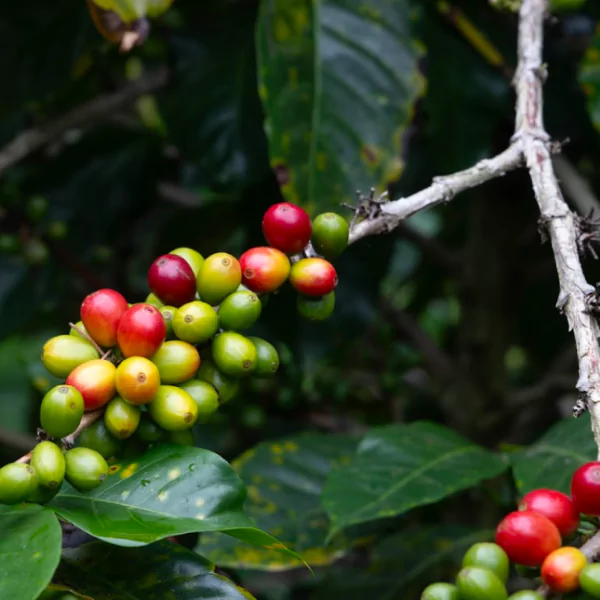Introduction
Coffee is one of the most consumed beverages in the world, and its quality largely depends on the conditions under which it is grown. Temperature and climate play a crucial role in the development of coffee plants and, consequently, in the flavor and quality of the final bean. In this blog, we will explore the importance of cultivating coffee in ideal temperatures and climates, and how these factors influence the characteristics of this beloved beverage.
The Ideal Climate for Coffee Cultivation:
- Temperature:
- The optimal temperature for cultivating Arabica coffee, the most prized variety, ranges between 18°C and 24°C. Lower temperatures can slow down plant growth and affect flowering, while higher temperatures can accelerate the coffee’s life cycle, negatively impacting its quality.
- Robusta coffee, although more resistant, also has an optimal temperature range, generally between 24°C and 30°C.
- Precipitation:
- The amount of rainfall required for coffee cultivation varies between 1,500 and 2,500 mm annually, distributed evenly throughout the year. Well-distributed rainfall ensures that plants receive enough water without facing periods of drought or excessive moisture, which can be harmful.
- Altitude:
- Altitude is another crucial factor. Coffee plants cultivated at higher altitudes (between 1,000 and 2,000 meters above sea level) tend to produce higher quality beans. Altitude influences temperature and sun exposure, two elements that affect the development of the coffee’s aromatic compounds.
- Soil:
- Fertile and well-drained soils are ideal for coffee cultivation. Volcanic soils, rich in minerals, are particularly beneficial as they provide essential nutrients for plant growth.


Impact of Climate on Coffee Flavor
Climate not only influences plant growth but also the flavor profile of coffee. Variations in temperature, altitude, and precipitation can significantly impact the organoleptic characteristics of the bean. Here’s how:
- Flavor Complexity:
- Coffee plants grown in cool climates at higher altitudes develop more complex flavors. The ripening process is slower, allowing for the formation of more aromatic compounds. These coffees often have more pronounced floral, fruity, and acidic notes.
- Acidity:
- Acidity is a valued characteristic in high-quality coffee. Lower temperatures and higher altitudes contribute to brighter and more vibrant acidity, while higher temperatures tend to produce coffees with less acidity and flatter flavors.
- Body and Sweetness:
- Growing conditions also affect the body and sweetness of coffee. Coffees grown in ideal climates develop a fuller body and natural sweetness that balances with acidity.

La Importancia de la Sostenibilidad Climática
With climate change, the ideal conditions for coffee cultivation are at risk. Rising temperatures and altered rainfall patterns can severely impact coffee production and quality. Therefore, sustainability in coffee cultivation is more important than ever.
- Sustainable Agricultural Practices:
- Implementing sustainable agricultural practices, such as agroforestry and efficient water use, can help mitigate the effects of climate change. These practices not only protect the environment but also improve the resilience of coffee plants.
- Biodiversity Conservation:
- Maintaining biodiversity on coffee farms is crucial for ecosystem health. The presence of diverse plant and animal species helps control pests and diseases naturally, reducing the need for chemical pesticides.
- Research and Development:
- Ongoing research on new coffee varieties and cultivation techniques is essential to address the challenges of climate change. Drought- and disease-resistant varieties can ensure the long-term sustainability of coffee production.
Conclusion
Cultivating coffee in ideal temperatures and climates is fundamental to producing high-quality beans with exceptional flavor profiles. Temperature, precipitation, altitude, and soil type are interrelated factors that influence every stage of plant growth and the development of its organoleptic characteristics.
Coffee is not just a drink; it is the result of a delicate balance between nature and human skill. Understanding and respecting the ideal climatic conditions for its cultivation allows us to appreciate even more each cup of coffee and ensure its enjoyment for future generations.

